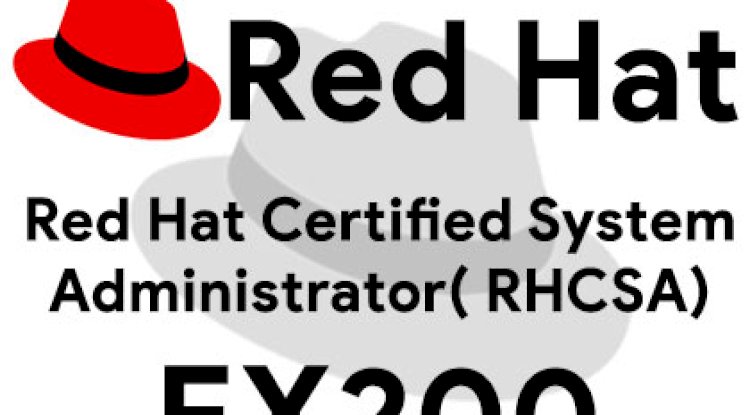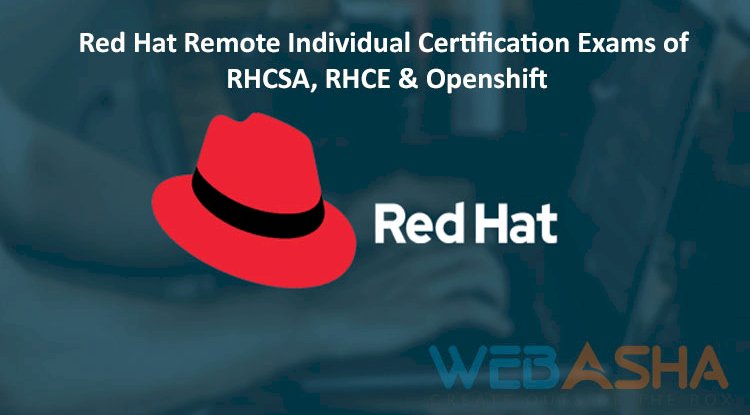Comprehensive Guide to Preparing for Penetration Testing Job Interviews | Technical Skills, Tools, and Soft Skills You Need to Master
Penetration testing, also known as ethical hacking, is a critical cybersecurity role responsible for identifying and exploiting vulnerabilities to protect organizations from cyber threats. If you're preparing for a penetration testing job interview, you'll need to combine both technical proficiency and communication skills to succeed. This blog offers a detailed guide on how to prepare for penetration testing interviews, covering essential skills, tools, common interview questions, and strategies to demonstrate your expertise. Key areas covered include mastering networking fundamentals, exploiting vulnerabilities, and utilizing penetration testing tools like Nmap, Metasploit, and Burp Suite. The blog also provides tips on gaining hands-on experience, practicing through Capture the Flag (CTF) competitions, and offering advice on how to showcase your practical knowledge during interviews. Additionally, we discuss how to handle scenario-based questions, demonstrate problem-solving abilit

Penetration testing, also known as ethical hacking, is a critical field within cybersecurity. Penetration testers simulate cyberattacks on systems, networks, and applications to identify vulnerabilities and strengthen defenses before malicious actors exploit them. As the demand for skilled penetration testers grows, many individuals are looking to break into this exciting field. However, preparing for a penetration testing job interview requires a combination of technical knowledge, hands-on experience, and soft skills.
In this blog, we will guide you on how to prepare for penetration testing job interviews, covering technical aspects, practical tips, common interview questions, and strategies to impress your interviewers.
1. Understanding the Role of a Penetration Tester
Before preparing for the interview, it is important to understand the core responsibilities of a penetration tester. Typically, this role involves:
- Identifying Vulnerabilities: Conducting security assessments on networks, systems, and applications to find weaknesses.
- Exploiting Vulnerabilities: Using ethical hacking techniques to exploit vulnerabilities to demonstrate the potential damage a malicious hacker could cause.
- Reporting Findings: Documenting security flaws and creating comprehensive reports for stakeholders, often with recommended solutions.
- Ensuring Security: Ensuring that vulnerabilities are patched or mitigated after testing to improve overall security.
Familiarize yourself with the specific requirements of the job posting you're applying for, as penetration testing roles can vary depending on the employer and the industry.
2. Technical Knowledge Preparation
Penetration testing involves a deep understanding of cybersecurity concepts, network security, and hacking techniques. To prepare for a job interview, ensure you are familiar with the following key topics:
Networking Fundamentals
- TCP/IP Protocols: Be prepared to answer questions about network protocols such as IP, TCP, UDP, DNS, HTTP, and HTTPS.
- Network Topologies and Architectures: Understand different network structures, including LAN, WAN, and VPNs, and how they can be targeted.
- Ports and Services: Know how to scan for open ports using tools like Nmap and be familiar with common services running on ports such as HTTP (port 80), SSH (port 22), and FTP (port 21).
Vulnerability Assessment Tools
- Nmap: Be proficient in using Nmap to scan and assess the security of networks. Understand different scan types, including TCP connect, SYN, and UDP scans.
- Wireshark: Be able to capture and analyze network traffic to detect malicious activity or weaknesses in communication.
- Burp Suite: Know how to use Burp Suite for web application security testing, particularly for tasks such as intercepting HTTP requests and scanning for vulnerabilities like SQL Injection and Cross-Site Scripting (XSS).
Exploitation Tools
- Metasploit: Understand how to use Metasploit to develop and execute exploits against target systems. Be familiar with creating payloads and using different modules.
- Aircrack-ng: Know how to use Aircrack-ng to perform wireless network security assessments and crack WEP and WPA/WPA2 keys.
- John the Ripper: Be familiar with John the Ripper, a password-cracking tool, and understand different methods of cracking passwords in different formats.
Operating Systems
- Linux: Many penetration testing tools are designed for Linux, so knowing how to work with a Linux-based system (especially Kali Linux) is essential.
- Windows: Be prepared to talk about how penetration testers assess vulnerabilities in Windows-based systems, including Windows-specific exploits and Active Directory.
- MacOS: Understanding MacOS security architecture is also beneficial, as some organizations use Macs in their environment.
Web Application Security
- OWASP Top 10: Be well-versed in the OWASP Top 10 web application security risks, including SQL Injection, Cross-Site Scripting (XSS), Broken Authentication, Sensitive Data Exposure, and others.
3. Hands-On Experience
Having hands-on experience with the tools and techniques mentioned above will give you a major advantage during the interview. Here are some ways to gain practical experience:
1. Set Up Your Own Lab
Create a personal penetration testing lab using virtual machines (VMs) and tools like Kali Linux, Metasploit, and OWASP Juice Shop. This allows you to simulate penetration testing scenarios and practice in a controlled environment.
2. Participate in Capture the Flag (CTF) Competitions
Participating in CTF challenges is a great way to hone your practical skills. CTF competitions simulate real-world hacking scenarios and provide you with opportunities to solve security challenges and test your abilities against other hackers.
3. Contribute to Open-Source Projects
Contributing to open-source penetration testing tools or related cybersecurity projects can showcase your technical expertise and passion for ethical hacking. It also gives you practical experience with coding and penetration testing methodologies.
4. Practice on Platforms like Hack The Box and TryHackMe
Websites like Hack The Box and TryHackMe offer virtual environments where you can practice penetration testing on real systems. These platforms also provide educational content to improve your skills.
4. Preparing for Common Interview Questions
In addition to technical proficiency, interviewers often test your soft skills, problem-solving ability, and how well you can communicate security issues. Below are some common interview questions for penetration testers:
Technical Questions
- What is the difference between a vulnerability scanner and a penetration testing tool?
- How would you exploit a SQL Injection vulnerability in a web application?
- What are the steps you would take to perform a network vulnerability assessment?
- How does Metasploit work, and can you walk us through a simple exploit scenario using it?
- Can you explain how you would perform a man-in-the-middle attack on a Wi-Fi network?
- How would you secure a Linux server that has been exposed to the internet?
Scenario-Based Questions
- Suppose you find a vulnerability in an organization’s web application. How would you report it to the client?
- You are hired to test a company’s network. How do you prioritize which systems to test first?
- If a penetration test revealed a critical vulnerability, how would you work with the development team to ensure it’s patched?
Behavioral Questions
- Describe a time when you found a critical vulnerability during a penetration test. How did you handle it?
- How do you stay updated on the latest security vulnerabilities and hacking techniques?
- Can you explain a complex technical concept to a non-technical person?
5. Demonstrating Soft Skills
In addition to technical skills, soft skills are also essential for a successful penetration tester. These include:
- Communication Skills: Being able to explain technical vulnerabilities in a clear, concise manner to both technical and non-technical stakeholders.
- Attention to Detail: Penetration testing requires a keen eye for spotting subtle vulnerabilities that others might overlook.
- Problem-Solving: Ability to think critically and creatively to bypass security measures and identify weaknesses.
6. Mock Interviews and Feedback
Before your actual interview, consider doing mock interviews with peers or mentors. This will help you refine your communication skills, practice explaining technical concepts, and get comfortable with the interview format.
Conclusion
Preparing for a penetration testing job interview requires a blend of technical knowledge, hands-on practice, and excellent communication skills. Understanding the tools, technologies, and methodologies used in penetration testing, along with having practical experience and the ability to articulate your findings, will help you stand out to potential employers. By following the steps outlined in this blog, you can increase your chances of success in securing a penetration testing role.
FAQs:
-
What are the key skills needed for a penetration testing job? Understanding networking fundamentals, security protocols, and knowledge of penetration testing tools like Nmap, Metasploit, and Burp Suite is crucial.
-
What tools should I master for penetration testing? Key tools include Nmap, Metasploit, Wireshark, Burp Suite, John the Ripper, and Kali Linux.
-
What is the difference between a vulnerability scanner and a penetration testing tool? A vulnerability scanner identifies vulnerabilities, while penetration testing tools simulate real-world attacks to exploit and confirm vulnerabilities.
-
What should I expect from a penetration testing interview? Expect a mix of technical questions, hands-on problem-solving tasks, and scenario-based questions to test your skills and experience.
-
How can I demonstrate my hands-on experience in a penetration testing interview? Mention CTFs, personal labs, or open-source contributions. Discuss specific tools and techniques you've used during testing.
-
Can I get a penetration testing job without certifications? While certifications like CEH or OSCP are helpful, practical experience and hands-on skills are equally important for employers.
-
What are common penetration testing interview questions? Expect questions on tools, methodologies, network protocols, web vulnerabilities, ethical hacking techniques, and incident response.
-
What is the importance of understanding TCP/IP in penetration testing? TCP/IP protocols form the backbone of networks. Understanding them helps in network scanning, traffic analysis, and attack simulation.
-
How can I practice penetration testing before an interview? Set up a home lab, participate in CTF challenges, and use platforms like TryHackMe and Hack The Box for hands-on practice.
-
What is a Capture the Flag (CTF) competition? CTF competitions are simulated ethical hacking challenges where you solve puzzles, exploit vulnerabilities, and capture flags to gain points.
-
How do I explain vulnerabilities in simple terms during an interview? Focus on the potential impact of the vulnerability and use analogies to help non-technical stakeholders understand the risks.
-
What is Burp Suite, and how do I use it for penetration testing? Burp Suite is a powerful web application security testing tool used to identify vulnerabilities such as SQL injection, XSS, and CSRF.
-
How do I perform a SQL injection attack during penetration testing? SQL injection involves manipulating database queries to execute malicious commands. Understanding how web applications handle input can help you exploit SQL injection vulnerabilities.
-
What is Metasploit, and how is it used in penetration testing? Metasploit is a widely-used framework for developing and executing exploits. It allows penetration testers to automate attacks against vulnerabilities.
-
How do you stay updated on the latest cybersecurity trends? Follow cybersecurity blogs, attend conferences, take online courses, and participate in security communities to stay current on new vulnerabilities and tools.
-
What is Wireshark, and how do I use it for network analysis? Wireshark is a network protocol analyzer used to capture and inspect network traffic for vulnerabilities or signs of compromise.
-
How do I prioritize vulnerabilities during a penetration test? Vulnerabilities should be prioritized based on risk, exploitability, potential impact, and the criticality of the affected system.
-
How do you perform a man-in-the-middle attack? A MITM attack involves intercepting and altering communication between two parties. Tools like Wireshark or Ettercap can be used to execute MITM attacks.
-
What is the OWASP Top 10, and why is it important for penetration testers? The OWASP Top 10 is a list of the most critical web application security risks. Penetration testers must be familiar with these risks to assess vulnerabilities in web applications.
-
What should be included in a penetration testing report? A report should include an executive summary, findings, risk levels, exploitation details, remediation suggestions, and proof of concept.
-
What is the role of scripting in penetration testing? Scripting allows penetration testers to automate repetitive tasks, customize tools, and exploit vulnerabilities more efficiently.
-
What is a reverse shell, and how does it relate to penetration testing? A reverse shell allows an attacker to gain remote access to a target system. Penetration testers use it to demonstrate exploitation of a system.
-
How do you handle confidential information discovered during a penetration test? All confidential findings should be reported securely to the client, with proper data protection protocols in place to maintain confidentiality.
-
How do I secure a Linux server exposed to the internet? Apply security best practices like disabling unnecessary services, using strong authentication, implementing firewalls, and keeping software up to date.
-
How do you perform a buffer overflow attack in penetration testing? A buffer overflow occurs when more data is written to a buffer than it can hold. Penetration testers can exploit this vulnerability to gain control of a system.
-
How do I demonstrate problem-solving skills during a penetration testing interview? Show your ability to think critically, approach problems methodically, and adapt your tactics based on the unique challenges you face during penetration tests.
-
What is the importance of understanding Windows security in penetration testing? Many enterprises use Windows-based systems, and understanding Windows vulnerabilities, user privileges, and Active Directory is crucial for testing these environments.
-
What are some common mistakes to avoid during a penetration testing interview? Avoid over-explaining basic concepts, neglecting practical experience, or being too vague when describing previous testing projects.
-
What should I include in my penetration testing portfolio? Include detailed examples of previous penetration tests, CTF challenges, open-source contributions, and certifications, as well as any custom tools you have developed.
-
How do I build a penetration testing lab at home? Set up a lab with virtual machines (VMs), Kali Linux, and vulnerable machines (such as OWASP Juice Shop) to practice penetration testing safely in a controlled environment.












![Top 10 Ethical Hackers in the World [2025]](https://www.webasha.com/blog/uploads/images/202408/image_100x75_66c2f983c207b.webp)

![[2025] Top 100+ VAPT Interview Questions and Answers](https://www.webasha.com/blog/uploads/images/image_100x75_6512b1e4b64f7.jpg)









